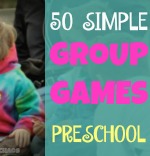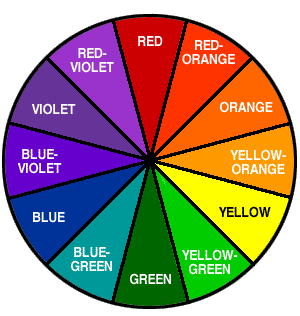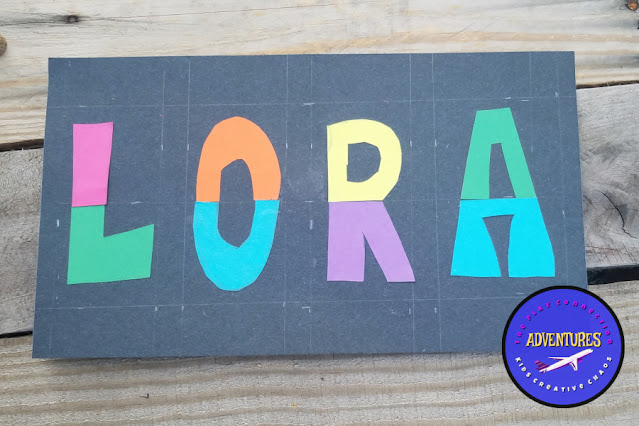How to Paint Like Henri Matisse
Paint Like Matisse
MATISSE ABSTRACT ART LESSON PLAN
Painting with Scissors and Paper Cut Outs: How to Paint Like Henri Matisse
COLOR THEORY COLOR SCHEME CUT PAPER LETTERS ART PROJECT
LEGEND Color Theory Letter Project
What are the Color Schemes?
How to Make Block Color Scheme LEGEND Letters with Bright Colored Paper
Essential Crafting Skills That Every Child Should Learn
Art and crafting activities have positive mental and physical benefits. Studies show that when children work together on craft projects, they build language skills as they create together, and more easily understand the perspective of others. Crafting also helps cultivate a child’s sense of achievement, building confidence and self-esteem through creation and experimentation.
In addition to learning important skills, supporting your child with creative outlets for free expression is good for their overall well being and health. Crafting is a wonderful way to relieve stress and offer space to learn to experiment and create. With a few simple supplies and an open mind, children will have a lot of fun while learning to enjoy crafting, all while developing a wide range of important skills. Here are some recommendations for teaching essential crafting skills to your children.
Junk Modeling
Open-ended art projects encourage the development of critical thinking skills. As a child makes a mental plan for what they want to make, they are building visual-spatial skills and exercising both right and left brain function. Designing models and sculpture helps children learn to evaluate shapes. An assortment of containers, wires, plastic, and random bits of household junk can be transformed into robots, toys, or mobiles. Provide glue and tape to help secure the pieces together, and paint and decorations for embellishing the model.
Help them turn a box into a pretend stove.
Sewing
Hand sewing tasks, like threading a needle or tying a knot, help improve hand-eye coordination and fine motor skills. As noted by the Philly Art Center, the small muscles in a child’s fingers, wrists, and hands are strengthened through arts and crafts activities, which helps to make learning to write easier. Older children may enjoy designing costumes or simple bags. Providing a sewing machine for children is a creative and fulfilling way to encourage artistic expression. Math skills, including spatial reasoning, measurement taking, and shapes are skills that can be learned through pattern making and design. Offer to host a fashion show for children to share and reflect on their creations.
What are the Cognitive Benefits of Crafts?
Making A Collage
Teaching crafting skills like cutting with scissors and drawing encourages the development of fine motor muscles. Suggest a collage theme and set a table with an assortment of papers, magazines, fabrics, leftover crafting supplies, and glue. Children will also learn about dimension and composition, gaining concentration skills as they assemble materials to create their art. Encourage children as they create unstructured work, focusing on the process and exploring the creation of art rather than the end product.
String Art
Children who engage with creative activities exercise and develop a creative mindset, learning there can be many ways to complete a task. With yarn, flat top nails or pins, and a bit of scrap wood or cardboard, kids will build skills like measuring and the steps involved in creating geometric and linear art. Patience and imagination will be stretched as they figure out how to transfer their ideas to the surface. Older children can be challenged to make elaborate templates or intricate designs with parabolic curves and repeating patterns. Dr. Kerry Freeman (Head of Art & Design Education, Northern Illinois University) adds that when kids engage in crafting and art for expression and are given the ability to take risks, they are developing lifelong innovation skills that will contribute to their success academically and as adults.
Learning essential crafting skills has so many benefits for your child, contributing to both their physical and emotional development as they grow. Plan to engage your child with age-appropriate creative activities every week. Enjoy spending family time together to teach these essential crafting skills to your child, it’s a wonderful opportunity to bond and create memories.
Recommended:
Pick a Collage Project from this list
Benefits of Extra Curriculars for Kids with Disabilities ad Special Needs
How do you Plan a Nursery?
The prospect of becoming a first-time parent is an equally daunting and exciting journey. There are many things that need to be done in preparation for your baby’s arrival, and for first-time parents, the list can often seem never-ending and overwhelming. Wondering how do you plan a nursery? A key task within that list is decorating the nursery, and organizing a space for the newest member of the family. Although it’s a joyous project, there are various factors and small details that are required to create the perfect nursery for your baby. Here at We Buy Any Home we’ve composed a guide on how to renovate a nursery for first time parents, along with things to include and some helpful tips. This article is written by Holly Herbert.
This post contains Amazon affiliate links.
Planning a Nursery Step-by-Step Guide
Step 1- Make A Plan:
It’s no question that preparing for the arrival of the baby takes planning, and planning the nursery is no exception. Your nursery will serve as a multi-functional room, not only will it be the place where your baby will eventually sleep, but it's where you will dress them, change, teach and feed them. Ensuring you have an in-depth plan is a great way to make sure you have everything you need and no little detail is missing.
Step 2- Cleaning and Maintenance:
It’s vital that you ensure your future nursery is pristine before you begin to think about decorating. Babies are incredibly susceptible to germs that arise through dust, pet hair and mold, so it's important that you spend a good amount of time cleaning all surface areas. However, try to refrain from using harsh chemicals when cleaning as the fumes can linger in the air and be toxic if inhaled by your baby.
It’s important to consider the smaller factors about the room. Are there drafty windows? Is the main light overbearing? Do the door hinges creak? All these small maintenance checks need to be fixed prior to the arrival of your baby, as you want them to have the most comfortable time in their nursery.
Step 3- Themes and Painting:
Once you have decided where you are going to put the nursery, then it's time to get creative. If you're thinking about painting then your options are limitless. Traditional colors are usually pink and blue, however neutral color palettes are becoming increasingly popular for a minimalist feel to the room. If you're thinking of being extra creative then you may want to consider going with a theme or perhaps a mural wall. A side note- if you opt to paint the nursery, make sure you buy a non-toxic paint that won't flake.
Don’t forget to decorate the ceiling too. Babies spend a lot of time on their backs, so why not give them a feature to look at. Consider adding a ceiling mural or a soothing color to enhance your nursery.
Under the Sea Children's Bathroom Decor
Step 4- A Focal Furniture Piece:
Most nurseries are centered around a focal piece of furniture such as a crib, but there are other options to choose from. A painted dresser can work well, or a large window or alcove. A small checklist of essential nursery items includes:
A cot (mattress and sheets too!)
Changing table or mat.
Nursing station.
Storage for things like clothes and nappies (bibs.)
A helpful tip is to ensure that everything is in reach of the changing table- including wipes, changing table covers, diaper disposal system, laundry hamper and a pacifier. This will allow you to reach for things with ease, avoid stress but more most importantly, keep your eye on your baby at all times.
What Style Baby Sling are You?
Step 5- Don’t Forget About Flooring:
As your baby grows, you will notice that they will begin to spend more time on the floor- therefore it's an important factor to consider before they get to that stage. If you’re opting to lay down a carpet, ensure it’s a shade that won't highlight stains and spills. Wooden floors are a popular choice, and you can put down a rug to add a pop of color and cushion any tumbles.
How to Make a Birthday Balloon Cupcake
Step 6- Sentiment:
This is your baby’s first room, so don’t forget to make it feel like home. Including items of sentiment for example, family photos, generational gifts such as soft toys and blankets are a neat touch to completing your nursery.
Recommended:
Tips to get Baby to Sleep Through the Night
Fun In The Sun - 6 Tips For Creating A Mud Kitchen For Your Kids
Kids love mud! And as dirty as they may get, it’s time to advocate messy play so they can learn new skills the fun way. The fastest and easiest way to encourage your kids to get outdoors is to build them a mud kitchen.They'll be tripping over each other to get outside
Building your own mud kitchen is a creative, cost-effective way of enabling messy play for your kids while saving money on an expensive play kitchen.
You can build your mud kitchen in your own way, and in the end, your kids will have the perfect environment in which to get their hands dirty anytime.
This post contains Amazon affiliate links for your convenience.
Photo: Jelleke Vanooteghem/Unsplash
Six tips to create your own mud kitchen
Use What You’ve Got
Poke around your garage and see what you can recycle to save money on your mud kitchen. You can use wood, recycled pallets, and old timber for the construction. Old cookware and bakeware, utensils, and decorations can also be used to finish out the kitchen,
Remember, the idea is to ignite your child’s imagination, so your DIY mud kitchen doesn’t need to resemble a brand-new toy kitchen set.
Stove Tops Add to The Fun
While it’s great to leave some things up to the imagination, it’s a good idea to make your play kitchen resemble a real kitchen by creating a stove top. You can paint the burners on a piece of timber or wood, and you can even add broken or thrifted appliances to your outdoor kitchen to enhance its appearance. You can also use good, old cardboard to create a play stove.
Bake Mud Cakes
The fun part of having a mud kitchen is that your kids get to play with mud and get as dirty as they want. All you need to make mud cakes is some sand or soil and water. You can use old cookware and bake ware to contain them and shape them like cakes and cupcakes.
Parents can get involved by showing kids how to create funky-shaped cookies with cookie cutters and molds or add colored pasta to the mud for added texture. This kind of sensory play is an important part of childhood development, but above all, it’s a whole lot of fun.
Set the Table
A mud kitchen is a fun way to teach your child table manners. Guide your preschoolers through setting a table and laying out the dishes. Show them the way to arrange cutlery and allow your children to bring some garden leaves to create napkins for a rustic table setting.
Add a Sink
Since you’ve introduced messy play to your preschoolers with colored pasta and mud cakes, it’s a good idea to take care of the cleanup. The most logical way to do this is to add a sink to your mud kitchen! To create your sink, use a silver or grey bucket and fill it with water or a big flower put with the bottom plugged works nicely too.
Add a hose in the bucket so that there’s an accessible faucet. This is a great way to teach children how to clean up after themselves. Add some dish washing liquid and a sponge so you can wash all the cookware the kids used before bringing it back into the house!
How to Make your own Dish Washing Soap
Dress For The Occasion
Every chef needs a chef’s hat and apron, so make sure to get these for your child. They will love it! Plus, the apron will offer some protection from mud splatter while playing. Rubber boots are a good idea too. Preschool age kids and toddlers love to wear galoshes!
Have fun with your kiddos and their mud kitchen. You may want to wear some rubber boots yourself! Encourage your children to enjoy free and imaginative play, and you can bet they’ll learn tons of kitchen tricks in the process. Pretend play is the best way to learn!
Pretend Play and Play Date Ideas from Adventures of Kids Creative Chaos
Fun Books about Galoshes from Amazon
Most Popular Post
-
50+ Easy Circle Time Games for Three, Four, and Five Years Group Time for preschoolers often happens several times a day, you need fres...
Get Circle Time Handbook
Spark your child's interest!
Games for Preschoolers
































